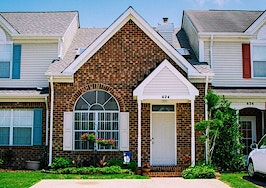U.S. house flipping rates declined from 7.5 percent of all home sales during the first quarter of 2020 to 6.7 percent in the second quarter, or roughly one in 15 transactions, according to Attom Data Solutions. That figure, however, was up from 6.1 percent year over year.
Although flipping rates declined, profits and profit margins increased. The gross profit on the typical home flip in the U.S. during the second quarter was $67,902, up from $63,000 during the first quarter, and from $61,900 one year ago.

Courtesy Attom Data Solutions
The typical gross flipping profit translated into a 41.3 percent return on investment (ROI) from the home’s original acquisition price. That figure was up from 38.9 percent during the first quarter of 2020 and from 40.4 percent in the second quarter of 2019. Those gains translated into the first quarterly increase in flipping ROI since the third quarter of 2018, and the first annual gain in ROI since the fourth quarter of 2017.
Those climbing profit margins are also a reflection of how home prices have continued to stay steady, and even increase in some part of the country, during the pandemic, as those buyers who stayed in the market competed for homes amid widespread low inventory.

Todd Teta | Attom Data Solutions
“Home flipping was a study in contrasts in the second quarter of 2020, as the flipping rate went one way and profits went the other,” Todd Teta, chief product officer at Attom Data Solutions, said in a statement. “Far fewer house hunters were out in the market looking for homes, which probably cut into the pool of potential buyers that investors could tap. But at the same time, home flippers who were able to close deals did better than they had done in a year and a half. That likely flowed in large part from extremely low interest rates that enticed buyers who remained employed and were willing to house-hunt within social distancing requirements.”
Home flipping rate national trends
Home flips as a portion of all home sales decreased from the first quarter to the second quarter in 75.5 percent of all markets analyzed in Attom’s report. The largest quarterly decreases were in Durham, North Carolina (rate down 40.7 percent); Provo, Utah (down 36.6 percent); Boston, Massachusetts (down 35.1 percent); Denver, Colorado (down 33.7 percent); and Salt Lake City, Utah (down 32 percent).
On the other side, the largest increases in home-flipping rates were in Salisbury, Maryland (up 45.8 percent); Fort Myers, Florida (up 20.2 percent); Tallahassee, Florida (up 16.8 percent); Corpus Christi, Texas (up 14.1 percent); and Kennewick, Washington (up 12.6 percent).
Profit margin breakdowns
Flipped homes that were sold during the second quarter sold for a median price of $232,402, $67,902 above the median investor purchase price of $164,500.
Profit margins rose from Q2 2019 to Q2 2020 in 62.9 percent of metro areas with sufficient data for Attom to analyze. The most significant ROI gains were seen in Fort Collins, Colorado (ROI up 167 percent); Johnson City, Tennessee (up 115 percent); Cedar Rapids, Iowa (up 100 percent); Youngstown, Ohio (up 92 percent); and Chattanooga, Tennessee (up 91 percent).
Conversely, the largest annual declines in flipping ROIs were seen in Myrtle Beach, South Carolina (down 69 percent); McAllen, Texas (down 57 percent); Toledo, Ohio (down 53 percent); Manchester, New Hampshire (down 46 percent); and Jacksonville, Florida (down 42 percent).
The highest raw profits for homes flipped were concentrated in the West and Northeast with San Jose, California (gross profit of $305,000); Honolulu, Hawaii ($173,500); San Francisco, California ($173,500); New York, New York ($156,550); and San Diego, California ($149,500) leading the way.
House flippers also seem to have taken advantage of low mortgage interest rates along with other buyers during the pandemic, as the number of home flippers who purchased with all-cash declined from 57.5 percent in Q1 2020 to 56.7 percent in Q2 2020.

The average time to flip a home rose during the second quarter to 183 days, up from an average of 174 days in the first quarter, but not far off from the average of 184 days in Q2 2019.
During the second quarter, the percentage of flipped homes sold to Federal Housing Administration (FHA) buyers rose to 15.6 percent, up from 15.2 percent the previous quarter and from 13.8 percent one year ago. That number marks the highest percentage of flipped homes sold to FHA buyers since the second quarter of 2017.












